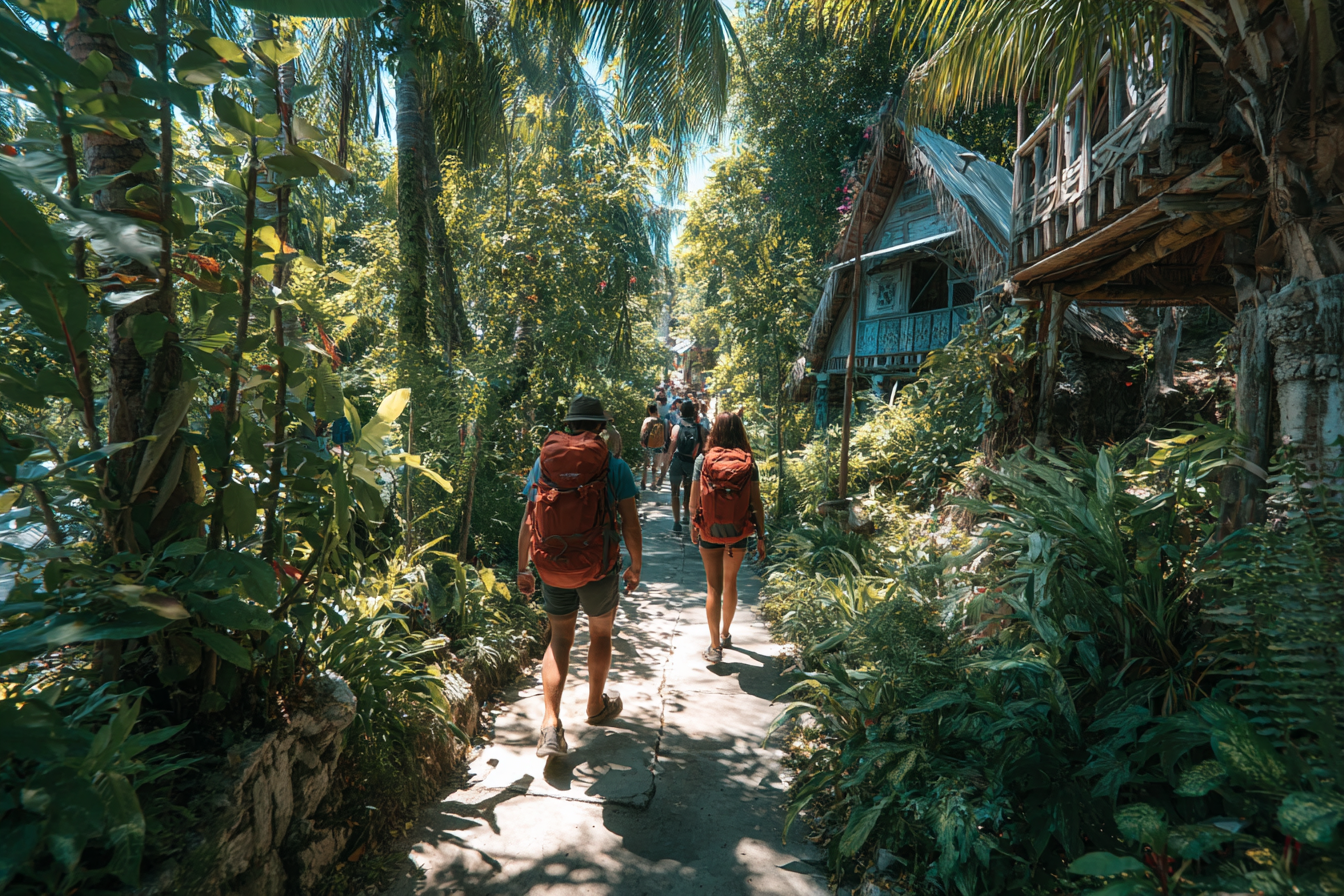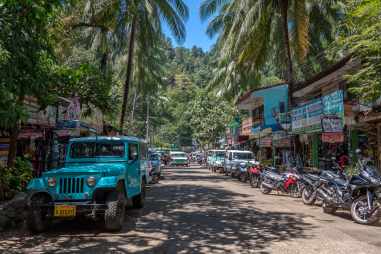Oslob, located on the southern tip of Cebu Island in the Philippines, has become a must-visit destination for travelers seeking a mix of natural beauty, cultural experiences, and unique wildlife encounters. Known worldwide for its whale shark watching opportunities, Oslob offers much more than just these gentle giants. Whether you’re planning your first trip or just need some handy pointers, this guide covers essential travel tips to ensure your Oslob adventure is as smooth and memorable as possible.
Best Times to Visit Oslob
Choosing the right time to visit Oslob can significantly impact your experience. The best months to travel are during the dry season, which typically runs from December to May. During these months, you can expect sunny weather and calm seas—perfect for whale shark watching and diving around nearby attractions like Tumalog Falls and Sumilon Island.
The peak season tends to be from December to February, coinciding with holidays and cooler temperatures. Although this means more tourists, the weather is generally very pleasant. To avoid large crowds and enjoy a more tranquil atmosphere, consider visiting during the shoulder months of March to May.
The rainy season, from June to November, brings frequent showers and stronger currents. While travel is still possible, some activities like whale shark snorkeling may be restricted for safety reasons, and travel plans could get disrupted by weather. Packing rain gear and flexible plans is key if you decide to visit during these months.
How to Get to Oslob from Cebu City
Oslob is approximately 120 kilometers south of Cebu City, and there are several convenient ways to get there depending on your budget and preference for comfort or adventure.
By Bus
The most budget-friendly option is taking a bus from the South Bus Terminal in Cebu City. Buses with “Cato” or “Bato” signs head toward Oslob, and the journey typically takes around 3.5 to 4 hours depending on traffic. Buses are frequent and affordable, making them a great choice for backpackers.
By Car or Motorbike
If you prefer more flexibility, renting a car or motorbike is ideal. The drive along the scenic coastal highway allows for stops at various spots along the way. Travel time by car is roughly 3 hours. Ensure your vehicle is in good condition, especially if riding a motorbike, as some parts of the road can be a bit rugged.
By Private Van or Tour Service
For groups or those seeking convenience, private vans or tour packages from Cebu City are available. These can be pre-booked and include pickups, guided tours, and drop-offs, streamlining the entire experience at a higher but reasonable cost.
Accommodation Options and Recommendations
Oslob offers a range of accommodation to suit all types of travelers—from budget guesthouses to mid-range resorts and boutique inns. Here are a few popular options:
- Budget Stays: There are several homestays and hostels near the whale shark interaction site, offering simple rooms and a local vibe. These are ideal for budget-conscious travelers and backpackers.
- Mid-Range: Resorts like Bluewater Sumilon Island Resort provide comfortable amenities and access to pristine beaches. Many mid-range hotels in town also feature pools and on-site dining.
- Luxury: For a more upscale experience, some resorts offer beachfront villas and full-service amenities, including spa treatments and guided tours.
Whichever accommodation you choose, booking ahead—especially during peak season—is advised as Oslob can fill up quickly.
What to Pack for Oslob Trips
Packing the right gear can help you enjoy your Oslob trip hassle-free. Here are some essentials:
- Swimwear and Rash Guards: For swimming with whale sharks and other water activities.
- Snorkeling Gear: While rentals are available, bringing your own mask and snorkel ensures hygiene and comfort.
- Waterproof Phone Case or Dry Bag: To protect your valuables during water excursions.
- Sunscreen: Reef-safe sunscreen to protect your skin while preserving marine life.
- Light Comfortable Clothing: Lightweight, breathable fabrics to stay cool in tropical weather.
- Insect Repellent: To guard against mosquitoes, especially in the evenings.
- Reusable Water Bottle: Stay hydrated, and consider a bottle that you can refill to reduce plastic waste.
- Cash: Many small shops and vendors in Oslob prefer cash payments.
Staying Safe and Healthy During Your Visit
Your safety and well-being are paramount while exploring Oslob. Here are some tips:
- Follow Whale Shark Guidelines: Maintain a respectful distance, avoid touching or feeding the whale sharks, and listen to guides to ensure both your safety and the animals’ protection.
- Hydrate Regularly: The tropical heat can quickly dehydrate you, so drink plenty of water throughout the day.
- Be Careful Around Waterfalls and Beaches: Currents can be strong, and some areas slippery. Wear appropriate footwear and heed safety signs.
- Food and Water Safety: Stick to bottled or purified water and eat freshly cooked meals to avoid stomach issues.
- Health Precautions: Bring any necessary medications, and it’s wise to have travel insurance that covers health emergencies.
Money and Currency Tips
The official currency in the Philippines is the Philippine Peso (PHP). Here are some money-saving and convenience tips for Oslob:
- Bring Sufficient Cash: While there are ATMs in Oslob, they can sometimes be limited or out of service. It’s best to carry enough cash for your daily expenses, especially when visiting smaller villages or markets.
- Currency Exchange: Exchange money in Cebu City before heading to Oslob for potentially better rates.
- Bargaining: It’s common to negotiate prices at markets and for transportation, but always do so politely and respectfully.
- Credit Cards: Use them in hotels or larger establishments, but don’t rely on them, as many small vendors are cash-only.
Respecting Local Culture and Environment
Oslob is a community proud of its traditions and stunning natural surroundings. Showing respect enhances your experience and benefits the locals and the environment alike.
- Dress Modestly: While beachwear is fine near the shore, cover shoulders and knees when visiting churches or local villages.
- Support Local Businesses: Buying souvenirs, food, and services from local vendors contributes to the community’s economy.
- Observe Environmental Protocols: Avoid littering, use biodegradable products when possible, and follow guidelines at nature sites to preserve biodiversity.
- Engage with Locals Respectfully: Learn a few basic Cebuano phrases and be polite when interacting.
- Avoid Disturbing Wildlife: Keep a respectful distance from animals, and do not feed or chase them.
By being a responsible traveler, you’ll help keep Oslob a beautiful place for future visitors and locals alike.
With these travel tips in hand, your visit to Oslob is sure to be enriching, exciting, and hassle-free. From planning when you go and how you get there, to staying safe and respecting the local culture, you’ll be well-prepared to enjoy everything this charming destination has to offer. Dive in, explore, and create unforgettable memories amidst the natural wonders of Oslob.







